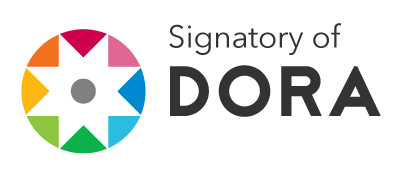Morphological and Histological Structure of Adexinal Glands of some Solitary Bee Species (Hymenoptera – Apoidea)
DOI:
https://doi.org/10.13102/sociobiology.v71i2.10405Keywords:
Dufour’s gland, Adexinal gland, histology, anatomy, ApoideaAbstract
Solitary bees are diverse and very important for plant and crop pollination. They are extensively studied taxonomically, but little is known about their anatomy and physiology compared to honey bees. Dufour’s gland is important for many physiological functions in social and solitary bees. The present study addresses the morphological and histological structure of Dufour’s gland in ten bee species representing bee families Andrenidae, Colletidae, Halictidae, Melittidae, Megachilidae, and Apidae. Results indicated that the shape and size of the glands tend to differ from one species to the other. However, on histological bases, the intern seems to be the same among the secretion cell types. The gland varied in length and size in the studied species, probably due to nesting behavior differences: ground and cavity nesting. Further studies are needed to clarify the different secretions produced by Dufour’s gland and their functions in each species.
Downloads
References
Abdalla, F.C., Velthuis, H.H.W., Cruz-Landim, C. da & Duchateau, M.J. (1999). Changes in the morphology and ultrastructure of the Dufour’s gland during the life cycle of the bumble bee, Bombus terrestris L. queen (Hymenoptera: Bombini). Netherlands Journal of Zoology, 49: 251-262.
Ali, H., Shebl, M., Alqarni, A.S., Owayss, A.A. & Ansari, M.J. (2017). Nesting biology of two species of the large carpenter bees Xylocopa pubescens and Xylocopa fenestrata (Hymenoptera: Apidae) in north-western Pakistan. Oriental Insects, 51: 185-196.
Batra, S.W.T. (1970). Behavior of the alkali bee, Nomia melanderi, within the nest (Hymenoptera: Halictidae). Annals of the Entomological Society of America, 63: 400-406.
Batra, S.W.T. (1966). Social behavior and nests of some nomiine bees in India (Hymenoptera, Halictidae). Insectes Sociaux, 13: 145-153. Available at: https://digitalcommons.usu.edu/bee_lab_ba/167.
Batra, S.W.T. (1964). Behavior of the social bee, Lasioglossum zephyrum, within the nest (Hymenoptera: Halictidae). Insectes Sociaux, 11: 159-185. Available at: https://digitalcommons.usu.edu/bee_lab_ba/108.
Batra, S.W.T. (1980). Ecology, behavior, pheromones, parasites and management of the sympatric vernal bees Colletes inaequalis, C. thoracicus and C. validus. Journal of the Kansas Entomological Society, 53: 509-538. Available at: https://digitalcommons.usu.edu/bee_lab_ba/94.
Batra, S.W.T. (1984). Solitary Bees. Scientific American, 250: 120-127.
Bergströn, G. & Tengö, J. (1974). Studies on natural odoriferous compounds. IX. Farnesyl and geranyl esters as main volatile constituents of the secretion from Dufour’ s gland of 6 species of Andrena (Hymenoptera, Apidae). Chemica Scripta, 5: 28-38. Available at: https://digitalcommons.usu.edu/bee_lab_ba/117.
Cane, J.H. (1983). Chemical evolution and chemosystematics of the Dufour’s gland secretions of the lactone-producing bees (Hymenoptera: Colletidae, Halictidae, and Oxaeidae), Evolution, 37: 657-674.
Cane, J.H. & Brooks, R.W. (1983). Dufour’s gland lipid chemistry of three species of Centris bees (Hymenoptera, Apoidea, Anthophoridae). Comparative Biochemistry and Physiology Part B: Comparative Biochemistry, B, 76: 895-897.
Cane, J.H. (1981). Dufour’s gland secretion in the cell linings of bees (Hymenoptera: Apoidea). Journal of Chemical Ecology, 7: 403-410.
Duffield, R.M., Fernandes, A., Lamb, C., Wheeler, J.W. & Eickwort, G.C. (1981). Macrocyclic lactones and isopentenyl esters in the Dufour’s gland secretion of halictine bees (Hymenoptera: Halictidae). Journal of Chemical Ecology, 7: 319-331.
Duffield, R.M., Fernandes, A., McKay, S., Wheeler, J.W. & Snelling, R.R. (1980). Chemistry of the exocrine secretions of Hylaeus modestus (Hymenoptera; Colletidae). Comparative Biochemistry and Physiology, B, 67: 159-162.
Dufour, L., (1841). Reserches anatomiques et physiologiques sur les orthopteres, les hyménopteres et les névropteres, Mémoires Présenteés par Divers Savants a l’ Académie Royale des Sciences de l’ Institut de France, Paris, 647 p.
Franckie, G.W. & Vinson, S.B. (1977). Scent marking of passion flowers in Texas by female Xylocopa virginica texana (Hymenoptera: Anthophoridae). Journal of Kansas Entomological Society, 50: 613-625.
Lello, E. (1971a). Anatomia e histologia das glandulas do ferrao das abelhas. Ill (Hymenoptera: Megachilidae e Melittidae). Ciencia e Cultura, 23: 243-258.
Lello, E. (1971b). Adnexal glands of the sting apparatus of bees: anatomy and histology, II (Hymenoptera: Halictidae). Journal of the Kansas Entomological Society, 44: 14-20.
Lello, E. (197I c). Glandulas anexas ao aparelho de ferrao das abelhas. Anatomia e histologia. IV (Hymenoptera: Anthophoridae). Ciencia e Cultura, 23: 765-772.
Lello, E. (1971d). Adnexal glands of the sting apparatus of bees: Anatomy and histology, I (Hymenoptera: Colletidae and Andrenidae). Journal of the Kansas Entomological Society, 44: 5-13.
Lello, E. (1976). Adnexal glands of the sting apparatus in bees: anatomy and histology, V (Hymenoptera: Apidae). Journal of the Kansas Entomological Society, 49: 85-99.
Kamel, S.M., Osman, M.A., Mahmoud, M.F., Haggag, E.S. I., Aziz, A.R. & Shebl, M.A. (2019). Influence of temperature on breaking diapause, development and emergence of Megachile minutissima (Hymenoptera, Megachilidae). Vestnik Zoologii, 53: 245-254.
Michener C.D. (2007). The Bees of the World, second edition. Johns Hopkins University Press, Baltimore, Maryland, 953 p.
Mitra, A. (2013). Function of the Dufour’s gland in solitary and social Hymenoptera. Journal of Hymenoptera Research, 35: 33-58.
Mitra, A. & Gadagkar, R. (2014). The Dufour’s gland and the cuticle in the social wasp Ropalidia marginata contain the same hydrocarbons in similar proportions. Journal of Insect Science, 14:1-18.
Noirot, C. & Quennedey, A. (1974). Fine structure of insect epidermal glands. Annual Review of Entomology, 19: 61-80.
Norden, B.B., Batra, S.W.T, Fales, H.M., Hefetz, A. & Shaw, J.C. (1980). Anthophora bees; unusual glycerides from maternal Dufour’s glands serve as larval food and cell lining. Science, 207: 1095-097.
Packer, L. (2003). Comparative morphology of the skeletal parts of the sting apparatus of bees (Hymenoptera: Apoidea). Zoological Journal of Linnaean Society, 138: 1-38.
Pitts-Singer, T.L., Buckner, J.S., Freeman, T.P. & Guédot, C. (2012). Structural Examination of the Dufour’s Gland of the Solitary Bees Osmia lignaria and Megachile rotundata (Hymenoptera: Megachilidae). Annals of the Entomological Society of America, 105: 103-110.
Rozen Jr., J.G. (1987). Nesting biology and immature stages of a new species in the bee genus Hesperapis (Hymenoptera: Apoidea: Melittidae: Dasypodinae), American Museum Novitiates, 2887: 1-13. Available at: https://www.biodiversitylibrary.org/page/62311233.
Shebl, M.A., Hassan, H.A., Kamel, S.M., Osman, M.A. & Engel, M.S. 2018.. Biology of mason bee Osmia latreillei Spinola under artificial nesting conditions in Egypt. Asia Pacific Entomology, 21: 754-759.
Shimron, O., Hefetz, A. & Tengo, J. (1985). Structural and communicative functions of Dufour’s gland secretion in Eucera palestinae (Hymenoptera; Anthophoridae). Insect Biochemistry, 15: 635-638.
Smith, B.H., Carlson, R.G. & Frazier, J. (1985). Identification and bioassay of macrocyclic lactone sex pheromone of the halictine bee Lasioglossum zephyrum. Journal of Chemical Ecology, 11: 1447-1456.
Tengö, J. & Bergström, G. (1978). Identical isoprenoid esters in the Dufour’s gland secretions of North American and European Andrena bees (Hymenoptera: Andrenidae). Journal of the Kansas Entomological Society, 51: 521-526.
Vinson, S.B., Frankie, G.W., Blum, M.S. & Wheeler, J.W. (1978). Isolation, identification, and function of the Dufour gland secretion of Xylocopa virginica texana (Hymenoptera: Anthophoridae). Journal of Chemical Ecology, 4: 315-323.
Downloads
Published
How to Cite
Issue
Section
License
Copyright (c) 2024 Kariman M. Mahmoud, Mohamed A. Shebl

This work is licensed under a Creative Commons Attribution 4.0 International License.
Sociobiology is a diamond open access journal which means that all content is freely available without charge to the user or his/her institution. Users are allowed to read, download, copy, distribute, print, search, or link to the full texts of the articles in this journal without asking prior permission from the publisher or the author. This is in accordance with the BOAI definition of open access.
Authors who publish with this journal agree to the following terms:
- Authors retain copyright and grant the journal right of first publication with the work simultaneously licensed under a Creative Commons Attribution License that allows others to share the work with an acknowledgement of the work's authorship and initial publication in this journal.
- Authors are able to enter into separate, additional contractual arrangements for the non-exclusive distribution of the journal's published version of the work (e.g., post it to an institutional repository or publish it in a book), with an acknowledgement of its initial publication in this journal.
- Authors are permitted and encouraged to post their work online (e.g., in institutional repositories or on their website) prior to and during the submission process, as it can lead to productive exchanges, as well as earlier and greater citation of published work (See The Effect of Open Access).



 eISSN 2447-8067
eISSN 2447-8067










